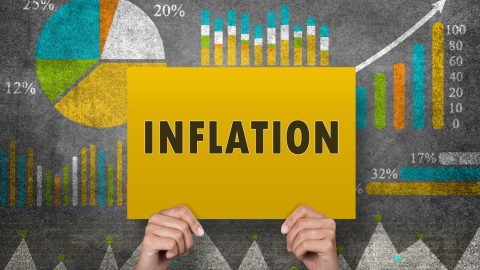Introduction
The global view on inflation has turned completely since Spring 2020. While low inflation has been an issue between the Great Financial Crisis and the start of the pandemic, multi-year-highs in inflation were reached in Spring 2021. This was not only a surprise for the capital markets but for Central Banks as well.
Higher inflation, which is (and remains) in line with the respective central bank inflation target, combined with high growth could be regarded as a positive development for economies in a so-called “Inflationary Boom Scenario”. This blog post is intended to give an overview of the origins and threats of such scenario.
Macroeconomic development since 2020
The stage for the Inflationary Boom Scenario was set by the fiscal and monetary institutions’ answer to the Covid-pandemic: They offered full support to save the economy. On the fiscal side, huge stimulus packages were issued, which were basically financed by the balance sheets of the Central Banks.
As a result, fiscal primary balances and debt (in % of GDP) soared. A large part of that debt was absorbed by the Central Banks. However, the massive rise in unemployment could be significantly reversed and thankfully brought back to lower levels.
As noted before, inflation was no issue at all back in 2020. Secular Stagnation (ongoing low growth, low inflation and low interest rates] seemed to be a more realistic macro-economic scenario.
Assumptions for an Inflationary Boom Scenario
In order to create an Inflationary Boom scenario given the macro-economic environment, several necessary conditions can be identified:
- First and foremost, elevated GDP growth is needed for creating new jobs. In the current (pandemic) environment, this growth could only be achieved with severe fiscal and monetary interference.
- The combination of these actions can indeed be called “Paradigm Shift” and is the center of the scenario. In principle, it means that monetary as well as fiscal policies stay looser compared to history in the economic recovery. Details about the “Paradigm Shift” can be found in last year’s blog entry on inflation.
- Consequently, this ongoing fiscal and monetary support increases demand and lifts GDP growth which sequentially brings down the unemployment rate. Lasting long enough, full employment will be reached. At this point, the economy is already running at full speed. If the authorities do not reduce their support, the economy will operate below the Non-accelerating inflation rate of unemployment (NAIRU) and a positive output gap occurs. The economy starts to overheat.
That development puts pressure on prices from two sides: first from the higher demand and second from the supply-side due to the shortage of workers. As a result, a somewhat higher wage growth lifts underlying inflation towards the central bank target.
Review of the assumptions
Those were our assumptions back in 2020. What did work out and what did not?
- On the fiscal side, huge stimulus packages were implemented which led to soaring governmental prime deficits. As a positive trend, the fight against unemployment was quite successful as the US unemployment rate fell from 14,8% at the peak in Spring 2020 to below 6% today.
- On the monetary side, we expected Yield-Curve-Control to be implemented. While this was not done, the FED continued with their asset purchase programs with a similar effect and yields remained at historical lows.
- In addition, we assumed the introduction of “Average Inflation Targeting”. This was done by the FED in August 2020.
Our conclusion from today’s perspective is that the Paradigm Shift we anticipated is in place now.
Inflation: Transitory or permanent?
The Pandemic created supply-demand mismatches in several dimensions, such as semiconductor shortages, higher transportation costs and higher goods price inflation due to soaring goods demand, with the result of surprisingly high inflation rates.
At the moment, maybe the most important question in macro-economics is whether this current rise in inflation is transitory or permanent.
Currently, we expect this rise to be transitory for several reasons.
- As the lockdowns eased, consumers flooded retailers with new orders. Manufacturing restarted the production, but massive supply chain disruptions appeared. However, these disruptions will be solved finally – and can therefore be viewed as transitory.
- The rise in inflation is not broadly based but concentrated on several sectors such as used cars and other consumer durable goods. Some of those very high inflation rates came already back to earth in August.
On a transitory phenomenon, the FED does not have to react by starting to raise interest rates, so the effect of the Paradigm Shift could continue.
Historically however, permanent inflation always started as a transitory one: This switch could especially be based on changing expectations of market participants’: Once they start to expect higher inflation, they act accordingly by demanding higher wages and producers passing higher production costs through to consumers. This could lead to a wage-price spiral and pave the way for permanent higher inflation. In this case the inflationary boom scenario evolves into a stagflationary scenario. While there is a small but growing probability of permanent high inflation at the moment, we regard a transitory inflation phenomenon as our base case.
A thin red line for Central Banks
Still, a possible change in inflation to permanent is the biggest threat to an Inflationary Boom Scenario.
If inflation becomes permanent, the Central Bank could react in two ways:
- First, they could start tightening immediately. This would basically prevent the Paradigm Shift. Economic recovery would take much longer. As a result, inflation would be no issue, and current supply bottlenecks would be quicker resolved, due to general lower growth. This would lead to a Secular Stagnation scenario.
- On the other hand, the Central Bank could act too late. They could repeat the mistakes of the 1970s by acknowledging permanent inflation only after a price-wage spiral had occurred. In this case, the Central Bank would have to react much stronger and faster and that would lead to another shock with big repricing in markets. In addition, it would most likely result in an economic stagnation, while the inflation would not decrease immediately. The combination of both effects would be Stagflation.
- Besides those scenarios, there is another alternative. This combines the Inflationary Boom scenario with improvement in productivity. The Productivity Boom-scenario has a deflationary effect, which lifts GDP growth and lowers inflation.
As a result, it is a thin red line, the Central Bank has to walk in order to stay on the Inflationary Boom Scenario.
Conclusion
In order to summarize our findings: An Inflationary Boom scenario is likely to occur in major economies around the world. Compared to the period between the end of the Great Financial Crisis and the start of the pandemic, this means higher real GDP growth and higher inflation.
The “Paradigm Shift” is the main driver for this scenario as it put more emphasis on employment and wages than on containing inflation. The two big risks to this scenario are 1) the current elevated inflation rates stay permanent, 2) that a severe economic overheating induces a stagflationary environment after full employment has been reached.
A spike in inflation could be observed in Spring and summer 2021 in most of the largest economies worldwide.
The Central Banks have to observe the macro-economic development carefully and try to slow down the overheating economy at the right time.
Legal note:
Prognoses are no reliable indicator for future performance.
Legal disclaimer
This document is an advertisement. Unless indicated otherwise, source: Erste Asset Management GmbH. The language of communication of the sales offices is German and the languages of communication of the Management Company also include English.
The prospectus for UCITS funds (including any amendments) is prepared and published in accordance with the provisions of the InvFG 2011 as amended. Information for Investors pursuant to § 21 AIFMG is prepared for the alternative investment funds (AIF) administered by Erste Asset Management GmbH pursuant to the provisions of the AIFMG in conjunction with the InvFG 2011.
The currently valid versions of the prospectus, the Information for Investors pursuant to § 21 AIFMG, and the key information document can be found on the website www.erste-am.com under “Mandatory publications” and can be obtained free of charge by interested investors at the offices of the Management Company and at the offices of the depositary bank. The exact date of the most recent publication of the prospectus, the languages in which the fund prospectus or the Information for Investors pursuant to Art 21 AIFMG and the key information document are available, and any other locations where the documents can be obtained are indicated on the website www.erste-am.com. A summary of the investor rights is available in German and English on the website www.erste-am.com/investor-rights and can also be obtained from the Management Company.
The Management Company can decide to suspend the provisions it has taken for the sale of unit certificates in other countries in accordance with the regulatory requirements.
Note: You are about to purchase a product that may be difficult to understand. We recommend that you read the indicated fund documents before making an investment decision. In addition to the locations listed above, you can obtain these documents free of charge at the offices of the referring Sparkassen bank and the offices of Erste Bank der oesterreichischen Sparkassen AG. You can also access these documents electronically at www.erste-am.com.
Our analyses and conclusions are general in nature and do not take into account the individual characteristics of our investors in terms of earnings, taxation, experience and knowledge, investment objective, financial position, capacity for loss, and risk tolerance. Past performance is not a reliable indicator of the future performance of a fund.
Please note: Investments in securities entail risks in addition to the opportunities presented here. The value of units and their earnings can rise and fall. Changes in exchange rates can also have a positive or negative effect on the value of an investment. For this reason, you may receive less than your originally invested amount when you redeem your units. Persons who are interested in purchasing units in investment funds are advised to read the current fund prospectus(es) and the Information for Investors pursuant to § 21 AIFMG, especially the risk notices they contain, before making an investment decision. If the fund currency is different than the investor’s home currency, changes in the relevant exchange rate can positively or negatively influence the value of the investment and the amount of the costs associated with the fund in the home currency.
We are not permitted to directly or indirectly offer, sell, transfer, or deliver this financial product to natural or legal persons whose place of residence or domicile is located in a country where this is legally prohibited. In this case, we may not provide any product information, either.
Please consult the corresponding information in the fund prospectus and the Information for Investors pursuant to § 21 AIFMG for restrictions on the sale of the fund to American or Russian citizens.
It is expressly noted that this communication does not provide any investment recommendations, but only expresses our current market assessment. Thus, this communication is not a substitute for investment advice.
This document does not represent a sales activity of the Management Company and therefore may not be construed as an offer for the purchase or sale of financial or investment instruments.
Erste Asset Management GmbH is affiliated with the Erste Bank and austrian Sparkassen banks.
Please also read the “Information about us and our securities services” published by your bank.


